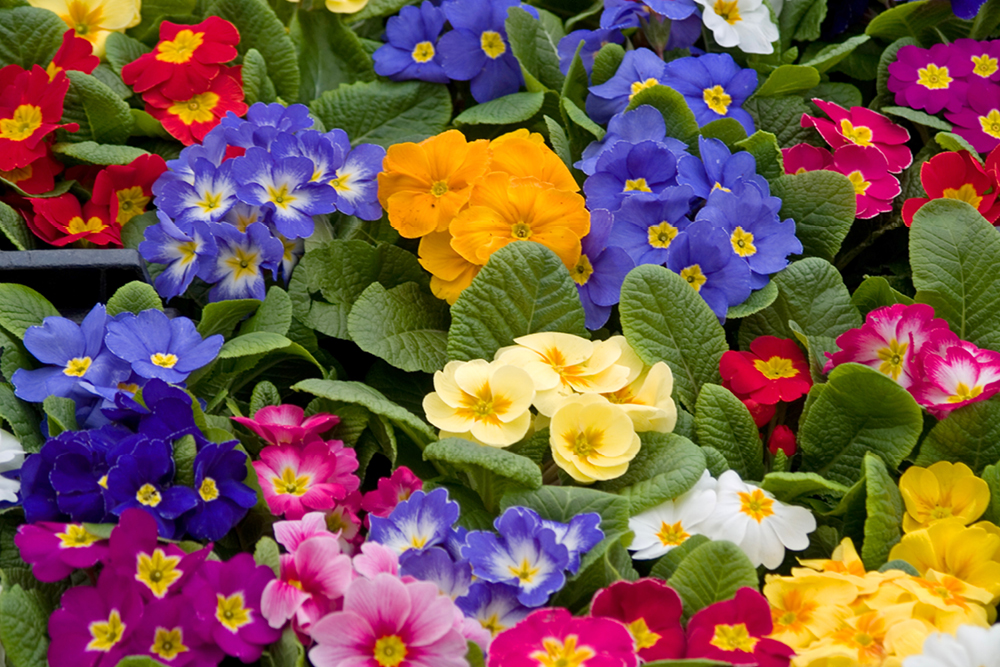Primrose, belonging to the genus Primula, is a captivating perennial that brings vibrant colors and a hint of spring to New Jersey gardens. With their early bloom, they signal the end of winter, introducing a season of growth and renewal. These plants have a rich history, are celebrated for their beauty and medicinal properties, and symbolize young love in various cultures. Their ability to bloom at night to attract nocturnal pollinators like moths adds to their allure, showcasing their adaptability and unique place in the ecosystem.
A Diverse Appeal
Suitable for New Jersey’s Zone 6 to Zone 7 climate, primroses come in various species, each with a unique charm. The English Primrose (Primula vulgaris) is known for its vibrant colors and resilience in cool temperatures, making it a springtime favorite. The Candelabra Primrose (Primula japonica) thrives in moist woodland settings, and the Cowslip (Primula veris), with its sweet-scented yellow flowers, prefers sunny to partly shaded spots. Meanwhile, the Drumstick primula (P. denticulata) enjoys cooler climates and moist, well-drained soils, offering globe-shaped clusters of colorful flowers.
Primroses’ diverse colors, from white and yellow to red, pink, blue, and purple, their edible flowers used in culinary preparations, and their presence in literature and folklore highlight their multifaceted appeal. With over 500 species in the Primula genus, these flowers are not just garden plants but cultural symbols. They are associated with historical figures like British Prime Minister Benjamin Disraeli and embraced for their versatility in garden settings.
Medicinal and Culinary Qualities
Primrose, known for their beauty, also possesses medicinal and edible qualities. For example, the oil from evening primrose contains gamma-linolenic acid, offering anti-inflammatory benefits that help treat conditions like eczema and arthritis. Traditionally, primrose flowers and leaves have been used to soothe coughs and respiratory issues, and they possess mild sedative properties to combat insomnia and anxiety.
Culinary uses of primrose include consuming their sweet, mild flowers in salads, desserts, and teas. At the same time, young leaves can be eaten raw or cooked, and roots have been used in soups. However, caution is advised regarding consumption and medicinal use, as not all species are suitable for these purposes, and individuals with allergies or sensitivities should be particularly cautious.
Cultivation and Care
Caring for primroses in New Jersey involves specific but manageable practices. Depending on the species, planting in partial shade to full sun, in moist, well-drained soil rich in organic matter during fall or early spring, sets the stage for their growth. Regular watering is crucial to keep the soil moist but not waterlogged, especially during dry spells. The soil should be slightly acidic to neutral, which can be achieved by amending garden soil with compost or peat moss. A balanced, slow-release fertilizer in early spring supports their flowering. Protecting primroses from pests like slugs and snails and ensuring good air circulation can prevent diseases. Despite New Jersey’s winters, primroses usually survive outdoors with minimal care. However, a light mulch after the ground freezes offers extra protection.
By choosing the suitable types and following care tips, gardeners in New Jersey can enjoy the enchanting beauty of primroses from early spring through summer, enriching their gardens with a palette of colors and a history of charm.

